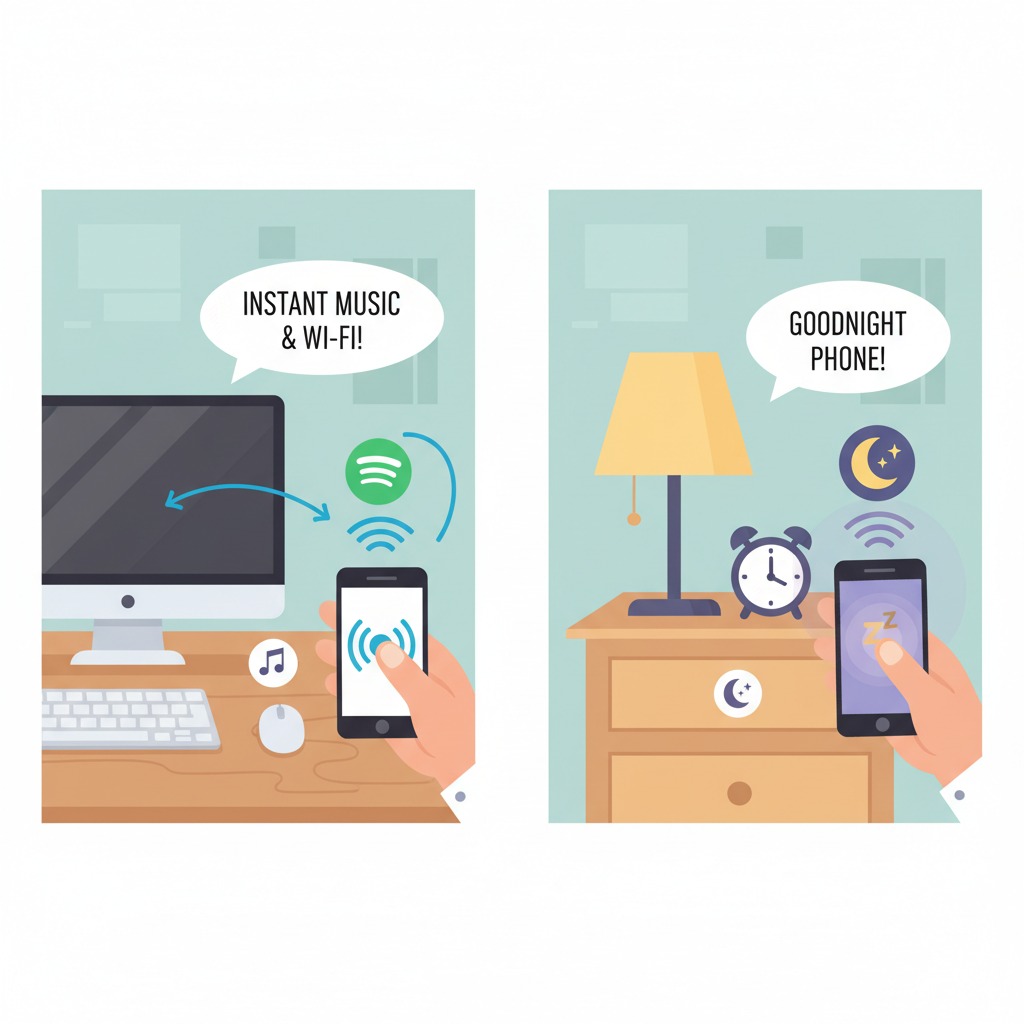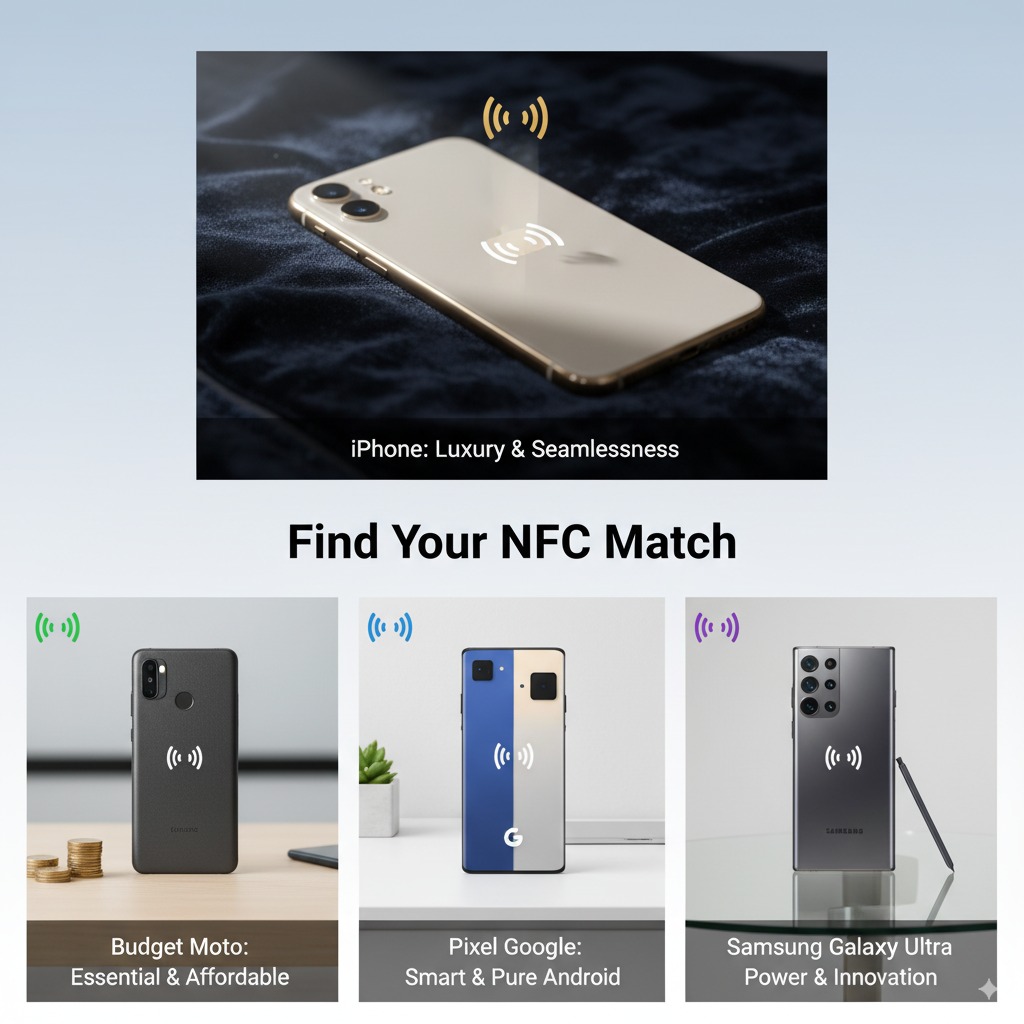The Best Phones with NFC for Seamless Connectivity
So, you’ve heard about NFC phones and you’re wondering… “Do I really need this little magic chip in my life, or is it just another gimmick like 3D TVs?” Spoiler: it’s not a gimmick.
NFC (that’s Near Field Communication if you wanna sound smart at parties) is the reason you can just tap your phone and boom—coffee paid, metro card scanned, data shared.
Honestly, once you get used to it, going back to a phone without NFC feels like driving a car without power steering. Sure, it works… but why suffer?
Phones with NFC: Why Should You Care?

Phones with NFC are not rare anymore. Almost every Android, iPhone, and even a few stubborn Motorola Moto models support NFC. But the difference lies in how they use it.
Side note: If you’re still rocking a phone without NFC in 2025… mate, you deserve a medal for stubbornness.
NFC Phones: The Heavy Hitters
Let’s talk actual devices. I’ll keep it real: you’ve basically got two main camps here — Apple and Android. And within Android, it’s a warzone: Samsung, Google, Huawei, Motorola, Sony… even BlackBerry (RIP but not really).

Apple iPhones (NFC done the Apple way)
Check Apple’s NFC details here: Apple Wallet Guide.
Samsung Galaxy (Android’s NFC powerhouse)
More on NFC & Samsung: Samsung Pay.
Google Pixel (clean, simple, reliable NFC)
Huawei & Honor (before the whole “ban” drama)
Motorola Moto (underdog with NFC love)
Sony Xperia & Others
If your phone isn’t on this list, check the specs on GSMArena — just search your phone name + “NFC.”
NFC Enabled Phones: What Does That Even Mean?

When a phone is NFC enabled, it means there’s a tiny NFC chip inside. That chip does all the magic—communicates with payment terminals, tags, or other devices.
It’s not rocket science, but it does feel like it when you use it for the first time.
NFC Tags: The Fun Part Nobody Talks About
Most people only use NFC for payments. But here’s the fun part: NFC tags.
Honestly, NFC tags are like cheat codes for real life. You can grab them on Amazon for cheap: NFC Tags on Amazon.

Business Applications of NFC Phones
Businesses love NFC. Why? Because it makes transactions faster, marketing cooler, and operations smoother.
Fun fact: even airlines are experimenting with NFC boarding passes. Imagine tapping your phone at the gate instead of fumbling for QR codes.
Finding the Right NFC Phone
This depends on:
Side note: Don’t buy a phone without NFC in 2025. Seriously. It’s like buying a car without Bluetooth.

FAQs About Phones with NFC
Q1: How do I know if my phone has NFC?
Go to Settings > Connections > NFC. Or just Google your phone model + “NFC.”
Q2: Do all iPhones have NFC?
Yes, from iPhone 6 onwards. But Apple limits how you can use it.
Q3: Can I use NFC without internet?
Yep. Payments usually need internet, but NFC tag automation works offline.
Q4: Is NFC safe for payments?
Safer than swiping a card. It uses encryption + tokenization.
Q5: Can I transfer files with NFC?
Not directly anymore. Android killed Beam. But you can still trigger Bluetooth or Wi-Fi transfers with NFC tags.
Conclusion
NFC phones aren’t just a nice-to-have. They’re a must-have in 2025. From contactless payments to NFC tags to business applications, this little chip has quietly become the backbone of how we use our phones.
So, if you’re shopping for a new phone — Samsung Galaxy, iPhone, Pixel, Huawei, Moto, Sony — make sure NFC is on the spec sheet. Trust me, once you’ve tapped to pay for your coffee without fumbling for your wallet, you’ll never go back.
Oh, and grab some NFC tags while you’re at it. You’ll thank me later.
